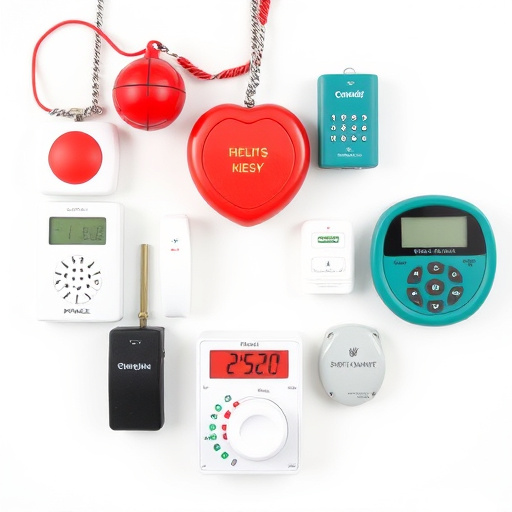Personal Alarm Volume Adjustment features offer customizable distress signals for enhanced safety. By adjusting volume based on location and comfort, users ensure discretion in public while maximizing reach in emergencies. This is crucial for outdoor activities, health monitoring, and proactive crisis management, providing individuals with control over their well-being across diverse environments.
In today’s fast-paced world, recognizing and responding to personal distress signals is crucial. This article explores how advanced tracking technology empowers individuals to effectively communicate emergencies. From understanding unique personal distress cues to leveraging innovative tools like Personal Alarm Volume Adjustment Features, we delve into strategies that enhance safety. By integrating these features, individuals can ensure swift assistance during critical moments, offering peace of mind and potentially life-saving intervention.
- Understanding Personal Distress Signals
- Tracking Technology: A Lifeline
- Volume Adjustment: Precision in Emergency
- Integrating Features for Enhanced Safety
Understanding Personal Distress Signals
Personal distress signals are unique to each individual, encompassing a range of physical, emotional, and behavioral indicators. Understanding these signals is crucial for recognizing when someone might be in need, especially in situations where they may not be able to communicate verbally. Features like Personal Alarm Volume Adjustment offer a practical solution by allowing users to set custom alerts, ensuring that their distress signals are heard even in the quietest of environments.
By paying attention to subtle cues, such as changes in breathing patterns, heart rate, or sudden shifts in mood, individuals can proactively address potential crises. The ability to adjust alarm volumes is a game-changer for those who might otherwise struggle to be heard, whether due to health conditions, sensory sensitivities, or their surroundings. This simple yet powerful tool enables users to take control of their safety and well-being.
Tracking Technology: A Lifeline
In today’s digital era, tracking technology has emerged as a lifeline for personal distress signals, offering unprecedented peace of mind. Devices equipped with advanced sensors and GPS capabilities can detect not only location but also vital signs like heart rate and movement patterns, enabling swift response in emergencies. These innovations are particularly beneficial for individuals who frequently engage in outdoor activities or those with health conditions requiring constant monitoring.
One notable feature among these technologies is the personal alarm volume adjustment. This allows users to set their alert levels according to their surroundings, ensuring critical signals stand out without causing a nuisance. Such adjustments facilitate effective communication of distress, making it easier for emergency services to locate and assist individuals in need.
Volume Adjustment: Precision in Emergency
In moments of personal distress, the ability to communicate effectively can be a lifeline. One crucial aspect often overlooked in emergency preparedness is the Personal Alarm Volume Adjustment feature. This simple yet powerful tool ensures that your distress signal reaches the intended listeners, whether it’s first responders or loved ones nearby. The precision in volume adjustment allows users to adapt their alarm sound to various environments—loud crowds, bustling streets, or quiet homes—ensuring maximum impact when it matters most.
By offering a range of volume levels, these personal alarms cater to different situations. In public spaces, a lower volume setting can avoid unnecessary panic while still signaling for help. In more secluded areas or during intense emergencies, increasing the volume amplifies the alarm’s reach. This flexibility is a game-changer, providing users with control and confidence in their ability to communicate distress signals effectively.
Integrating Features for Enhanced Safety
Incorporating features like Personal Alarm Volume Adjustment enhances safety by providing users with a customizable element, crucial for scenarios where one might be in distress but unable to shout or make significant noise. This adjustment allows individuals to set the alarm’s volume according to their comfort level and situation, ensuring that it can be heard effectively without causing undue attention in public spaces. Moreover, these features offer a sense of control, empowering users to manage their safety discreetly.
With the ability to adjust the alarm volume, individuals can tailor their distress signal to their environment. This is particularly beneficial in diverse settings, from bustling cities where noise levels vary greatly to quieter suburban areas. By allowing for personalization, users can ensure that their personal alarm remains effective and noticeable when needed most, making it a game-changer in enhancing personal safety.
Personal distress signals equipped with tracking technology have revolutionized emergency communication, offering vital safety features like precise volume adjustment. By integrating these innovative adjustments, users can ensure their alerts are heard, whether in a bustling environment or remote locations. This advanced functionality, coupled with tracking capabilities, makes personal alarm devices indispensable tools for enhancing individual safety and peace of mind.
